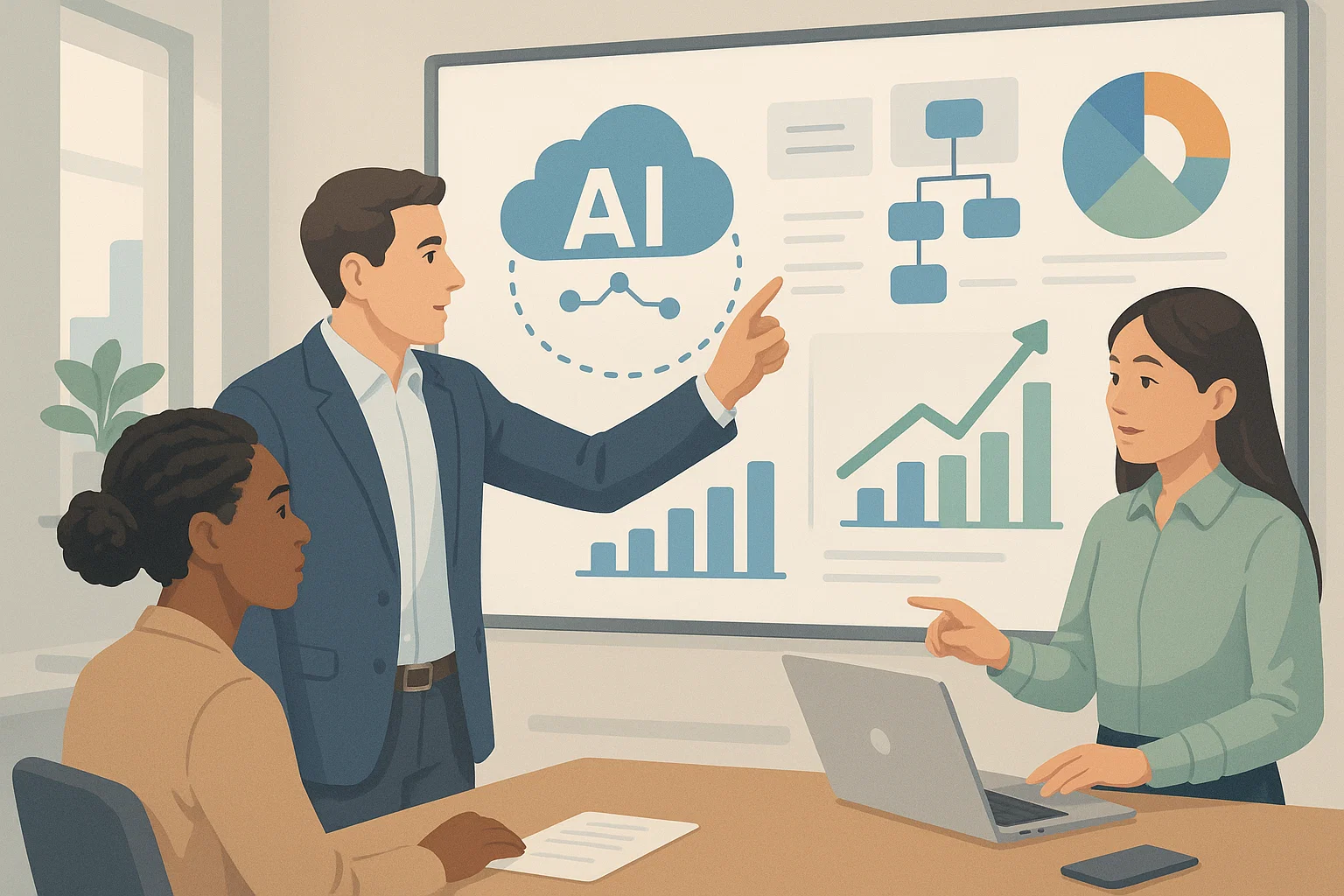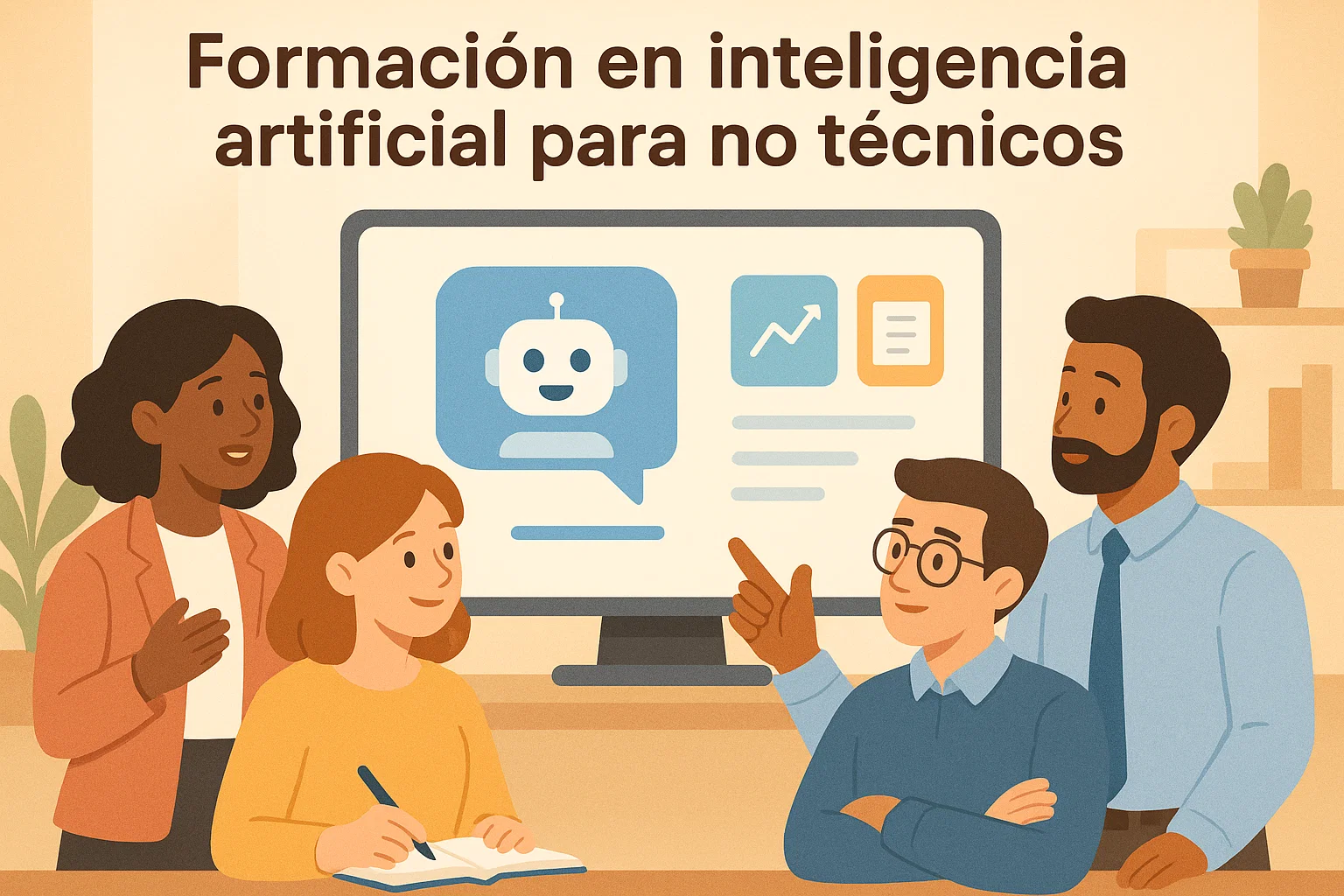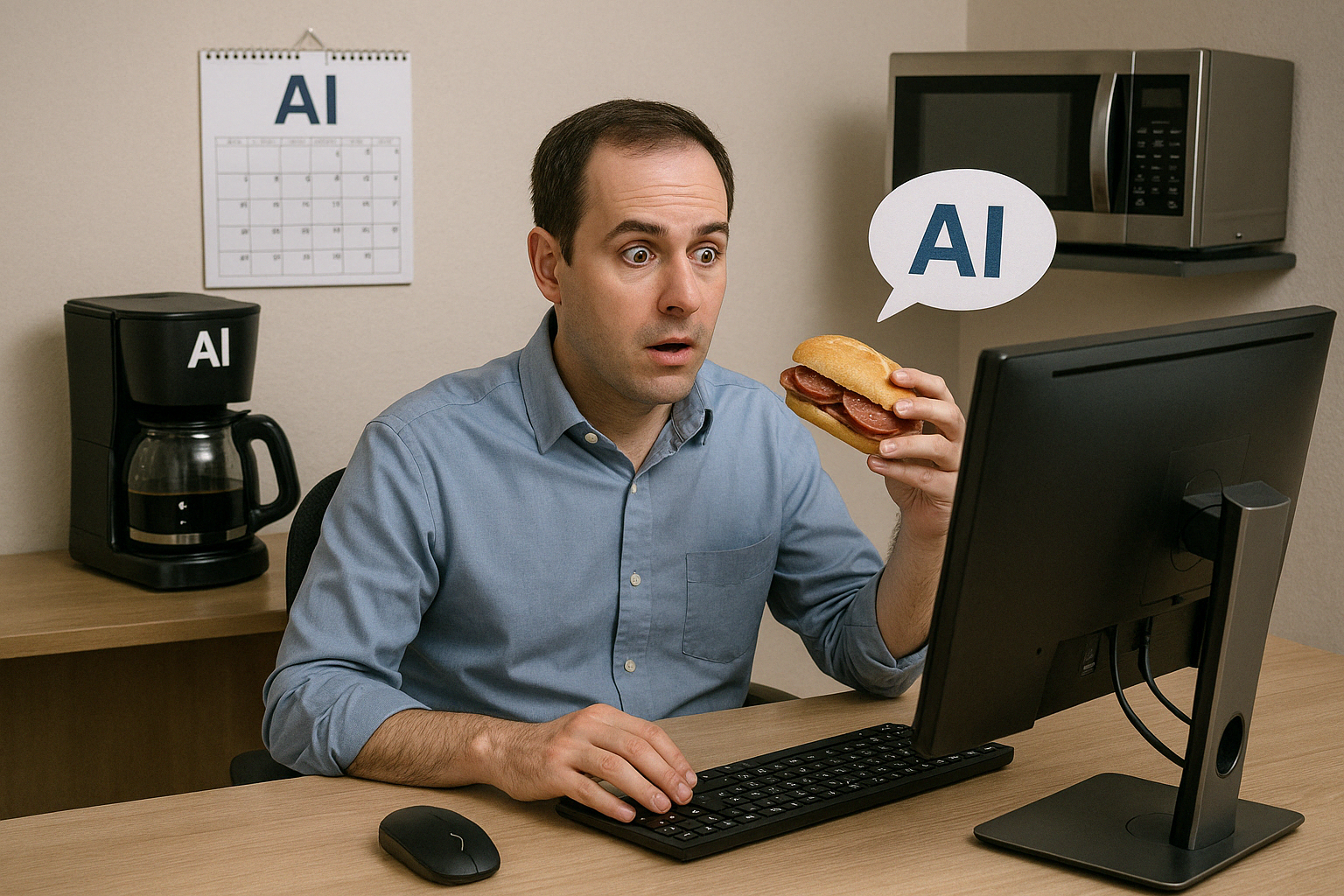
This isn’t another AI article telling you that you’re going to lose your job or teaching you how to take your photos in Pixar mode (which is really cool!) or how to automate your meeting notes as actions in a team planner.
Here we are going to focus on how to apply artificial intelligence in organizational transformation processes . organizational transformation processes, with direct impact on how you work, lead and make decisions.
Nowadays, it seems like everything has AI in it. But beyond the hype, organizational organizational transformation with artificial intelligence is a real opportunity to redesign your company from the inside out, with a strategic and not just technological focus.
Introduction to What is AI?
Artificial Intelligence in sausage sandwiches!
Butwhat do wereallymean by artificial intelligence?
I like to define artificial intelligence as a pretend brain that lives inside machines, like computers or robots. It trains itself with thousands of examples, just like you learn by seeing and practicing. For example, if you see many pictures of dogs and cats, you can learn to tell which is which.
In the business context, it’s like an invisible assistant that works very fast, but always needs people to teach it and tell it what to do, because it doesn’t think alone like we do.
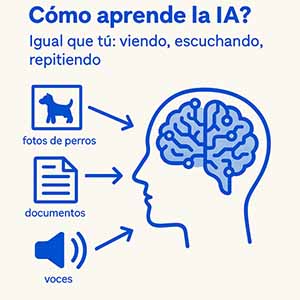
AI in companies
In many organizations, artificial intelligence is already present… but in an isolated and unstrategic way.
In my experience, in 90% of the companies some employees already use artificial intelligence, but almost always as a personal tool: summarizing documents, writing emails, generating images, analyzing data in Excel or databases, finding improvements in texts, translating, etc.
Watch out! Here we have the first “elephant” of AI in companies:
What data are you sharing? Are there any breaches or risks in this information?
There are also those who use it as an advanced search engine… or as a game.
Another very interesting melon -which we will not open today- is the artificial intelligence strategy in companies.
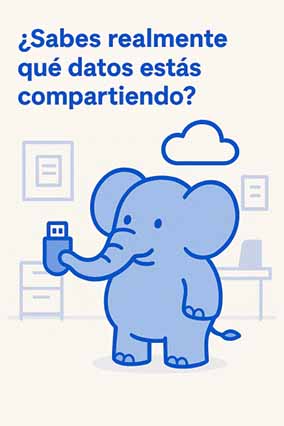
Going back to basics, we ask ourselves: how can we benefit from AI in organizational processes?
Here the decision is simple: AI should handle tasks that require handling large volumes of information.
People, on the other hand, should focus on tasks that involve interaction, adaptability and judgment.
Therefore, the transorganizational training with artificial intelligence with artificial intelligence has a clear scope: it does not solve everything, but it can be a powerful tool to evolve how we work and organize ourselves.
Organizational transformation with artificial intelligence: What is your strategy?
Before launching into the application of artificial intelligence in our company, it is essential to understand our business strategy.
How do we position ourselves in the market? What kind of value do we offer?
To reflect on this, we like to use Porter’s generic strategies model. Porter’s generic strategy model.

Although it is a simple model, it helps us to classify our strategy in one of these four positions:
- Cost Leadership
Become the most efficient producer in the industry, offering products or services at lower prices than the competition. - Differentiation
Offer something unique and valuable to the customer that justifies a higher price. - Cost Focus
Focus on a specific market segment, with competitive pricing within that niche. - Focus on Differentiation
Specialize in a niche, offering solutions that are highly adapted and perceived as different.
Depending on your strategy, organizational organizational transformation with artificial intelligence will have a different focus.
Later on, we will see specific examples of how to apply AI in organizational processes according to each strategy.
Examples of organizational transformation with AI in costs
One of the most common strategies in highly competitive environments is cost leadership.
The objective is clear: to become the most efficient option in the market, reducing costs and offering lower prices than the competition without sacrificing quality.
In this context, organizational transformation with artificial intelligence focuses on optimizing internal processes, eliminating unnecessary manual tasks and improving productivity.
Practical examples:
- Automation of repetitive processes (RPA + AI): automatic invoice processing, customer service with chatbots, bank reconciliations…
- Predictive maintenance in industrial plants: reduction of unplanned shutdowns and optimization of machinery life cycle.
- Logistics optimization with AI: more efficient delivery routes, intelligent inventory management, demand forecasting to reduce unnecessary stock.
- Operational efficiency analysis: algorithms that detect process bottlenecks and propose improvements based on real data.
This approach allows organizations to reduce structural costs, scale operations in a more agile way and focus human talent on higher-value tasks.
Examples of Organizational Transformation with AI in Differentiation
In this strategy, companies seek to stand out in the market by offering unique and highly valued products or services. Organizational transformation with artificial intelligence in this case is not so much focused on reducing costs, but on creating personalized, innovative and memorable customer experiences.
The objective is to maximize perceived value, foster continuous innovation and offer tailor-made solutions aligned with user expectations.
Practical examples:
- Advanced personalization: real-time recommendation engines, tailored user experiences (like Netflix or Spotify).
- Generative AI for co-creation: product design with the client (fashion, packaging, graphic design, marketing…).
- Voice of Customer (VoC) analysis: detection of needs and feelings through NLP applied to surveys, chats or social networks.
- Intelligent virtual assistants: they not only solve doubts, but also guide and advise based on the user’s profile or context of use.
Although AI can also be used to improve operational efficiency, in this approach the main focus is on achieving a competitive advantage based on differentiation, not cost.
Examples of Organizational Transformation with AI in Focus
Companies that follow a focus strategy direct their efforts to a very specific segment of the market. They seek to become leaders within their niche, thanks to a deep knowledge of the customer, the product or the problem they solve.
In these cases, organizational organizational transformation with AI is oriented to better understand the target audience and offer hyper-personalized solutions.
- Customer micro-segmentation with AI: identification of internal sub-niches and generation of ultra-relevant value propositions.
- Specialized predictive models: detection of specific patterns, such as medical risks in specific populations.
- AI-based expert systems: tools that learn from previous cases and provide informed recommendations (legaltech, edtech, healthcare…).
- Virtual assistants trained in niche language: chatbots capable of communicating with depth and precision within a very specialized context.
In this approach, AI acts as a precision tool to adapt the organization to a very specific environment, generating differential advantages that are difficult to replicate.
AI doesn’t change everything, but it can change what matters
Artificial intelligence in companies is not a fad, nor a magic solution. It is a powerful lever for organizational transformation, as long as it is aligned with the real business strategy.
The challenge is not technical: it is strategic.
It’s not about using AI because everyone else is doing it, but about applying artificial intelligence in organizational processes where it can amplify what already makes you strong.

Before adopting tools or automating tasks, ask yourself:
- Which part of your company generates the most value?
- Where are decisions made that could be supported by data?
- What tasks could you free up so that people can focus on what really matters?
Organizational transformation with AI starts with a decision: use technology to multiply what already differentiates you.
And if you are at that point of reflection…why not explore it together?

